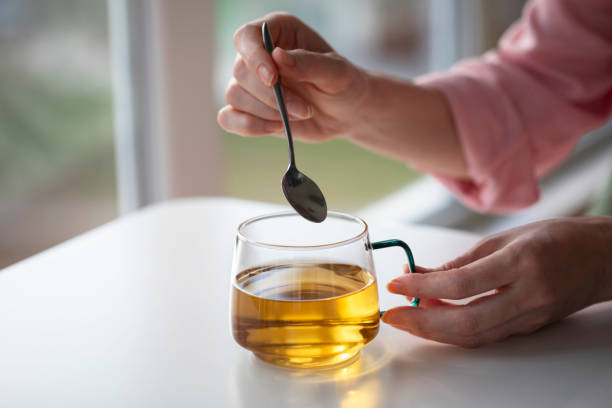Flower tea, a captivating and aromatic beverage, is more than just a drink; it’s an experience that bridges cultures, history, and a deep appreciation for nature. Known for its delicate flavors and soothing qualities, flower tea has captivated tea enthusiasts around the world. In this article, we explore the rich tradition, diverse types, and the myriad benefits of this enchanting beverage.
The Tradition of Flower Tea
Flower tea has a storied history that stretches across centuries and continents. Its roots can be traced back to ancient China, where it was initially used in traditional medicine. The Chinese believed that flower tea had properties that could balance the body’s energy, improve mood, and aid in various ailments. Over time, flower tea evolved from a medicinal practice into a beloved cultural tradition, enjoyed for its taste and aesthetic appeal.
In Chinese culture, the art of making flower tea, known as “flower tea brewing,” is considered a form of relaxation and meditation. The process involves carefully selecting flowers, often hand-picking them during the peak of their bloom to ensure the best flavor and fragrance. These flowers are then dried and brewed to create a tea that is not only pleasing to the palate but also visually stunning.
Popular Types of Flower Tea
Flower tea is as diverse as the flowers from which it is made. Each type brings its own unique flavor profile and benefits. Here are some of the most popular varieties:
Jasmine Tea: Perhaps the most well-known of the ชาดอกไม้, jasmine tea is celebrated for its delicate floral aroma and soothing taste. Made by infusing green tea with jasmine blossoms, this tea is a favorite in many cultures for its calming effects and pleasant fragrance.
Chrysanthemum Tea: A staple in Chinese tea culture, chrysanthemum tea is known for its light, slightly sweet taste. It’s often enjoyed for its purported health benefits, including its ability to help with headaches and promote relaxation.
Hibiscus Tea: Vibrant red in color, hibiscus tea offers a tart flavor reminiscent of cranberries. Rich in vitamin C and antioxidants, hibiscus tea is often consumed cold and is popular in various parts of the world for its refreshing taste and health benefits.
Rose Tea: Made from dried rose petals, rose tea has a subtle, sweet flavor and is often enjoyed for its aromatic qualities. It’s commonly used in aromatherapy and is believed to have calming effects.
Lavender Tea: Known for its soothing properties, lavender tea offers a fragrant, floral taste. Lavender is often used in relaxation and sleep aids, making this tea a popular choice for those seeking tranquility.
Brewing Flower Tea: A Ritual of Elegance
The process of brewing flower tea is as much an art as it is a science. Each type of flower tea requires specific methods to bring out its best flavor and aroma. Here’s a general guide to brewing flower tea:
Select High-Quality Flowers: The quality of the tea is directly influenced by the quality of the flowers used. Choose flowers that are fresh, free from pesticides, and preferably organic.
Use the Right Water Temperature: Different flowers require different water temperatures to release their flavors properly. For instance, green tea-based flower teas like jasmine tea typically need water at around 175°F (80°C), while herbal flower teas like hibiscus can be brewed with boiling water.
Steeping Time: Over-steeping can lead to bitterness, while under-steeping may result in a weak flavor. Generally, flower teas should be steeped for about 3 to 5 minutes, but this can vary based on the type of flower and personal preference.
Enjoy the Aroma and Taste: Part of the pleasure of flower tea is in its aroma. Take a moment to inhale the fragrance before sipping. This adds a layer of sensory enjoyment to the tea-drinking experience.
Health Benefits of Flower Tea
Flower tea is not just a treat for the senses; it also offers numerous health benefits. Here are some of the potential advantages associated with drinking flower tea:
Antioxidant Properties: Many flower teas, such as hibiscus and chrysanthemum, are rich in antioxidants. These compounds help neutralize free radicals in the body, which can reduce the risk of chronic diseases and support overall health.
Stress Relief: The calming effects of flower teas, particularly lavender and chamomile, can help reduce stress and promote relaxation. This makes them an excellent choice for unwinding after a long day.
Digestive Health: Certain flower teas, like chrysanthemum and rose, are believed to aid in digestion. They can help soothe the digestive tract and alleviate discomfort related to digestion.
Skin Health: Antioxidants in flower teas can also benefit the skin by promoting a healthy complexion and reducing signs of aging. For instance, rose tea is often used in skincare routines for its anti-inflammatory properties.
Conclusion
Flower tea is a beautiful reflection of nature’s artistry and a testament to centuries of tradition. From its calming effects to its rich, aromatic flavors, flower tea offers a unique and enjoyable drinking experience. Whether you’re a seasoned tea enthusiast or a curious newcomer, exploring the world of flower tea can be a delightful journey into taste, culture, and wellness. So, the next time you brew a pot of flower tea, take a moment to savor its beauty and appreciate the rich history that each sip represents.



Recent Comments